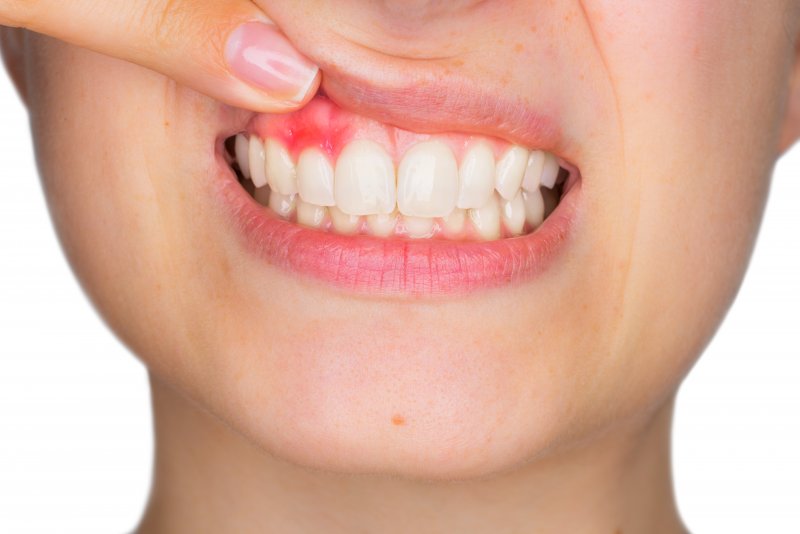
After waking up one morning, you realize something feels off in your mouth. You run to the bathroom, take a look in the mirror, and notice that your gums are red and swollen. Even though your first instinct might be to panic, it’s important to remain calm and avoid thinking worst-case. However, you can’t help but wonder what the problem could be. Is it gingivitis? Gum cancer? Although the only way to know for sure is to visit your dentist, here’s how you can recognize and prevent each condition.
What Is Gingivitis?
Gingivitis is a mild form of gum disease that causes irritation, swelling, and redness in your gums. It’s commonly the result of plaque and bacteria buildup on your teeth.
Here are some signs and symptoms that could indicate you have gingivitis:
- Red, swollen, and tender gums
- Gums that bleed easily
- Receding gums
- Chronic bad breath
- Pockets between your tooth and gum
The good news is that gingivitis can be treated (and even reversed) if caught during the early stages. That’s why it’s important to seek dental treatment as soon as you notice any symptoms. Otherwise, it can develop into a more severe form of periodontal disease.
What Is Gum Cancer?
Gum cancer is a type of oral cancer that affects almost 53,000 people every year. It’s often confused with gum disease, which is why it’s important to keep up with your regular preventive checkups. One of the most notable signs of gum cancer is patches or irregular growths on the gums. Their scientific names are erythroleukoplakia (red and white patches or growths) and leukoplakia (just white) or erythroplakia (just red). Although leukoplakia is benign, erythroleukoplakia and erythroplakia are more malignant. With that in mind, it’s important to see your dentist right away if you notice unusual growths on your gums – especially those that don’t clear up after two weeks. Cancer can spread quickly and become life-threatening, which is why early detection is crucial.
How You Can Keep Your Gums Healthy
Gingivitis and gum cancer are two entirely different conditions. However, you should still take them both seriously. One of the best things you can do to protect your gums is to visit your dentist regularly for checkups and cleanings. Your dentist can help lower your risk of these conditions and catch them during the early stages. With their help, you can treat these issues before they turn into significant issues. You must also practice good oral hygiene and follow a healthy lifestyle. Additionally, not using tobacco products and drinking alcohol in moderation can help lower your risk.
Do you notice something amiss with your gums? Take a deep breath, and try not to panic. Although it’s probably nothing, it’s always a good idea to get it checked out by your dentist just in case.
About the Practice
At Rauchberg Dental Group, we’re passionate about helping patients of all ages achieve and maintain optimal oral health. Our team uses the latest technologies, materials, and techniques to ensure you receive the best treatment possible. If you’ve noticed something wrong with your gums, don’t hesitate to contact us for help. We can diagnose the problem quickly and provide you with the prompt relief you deserve. Visit our website or call (973) 718-9887 to make an appointment.
